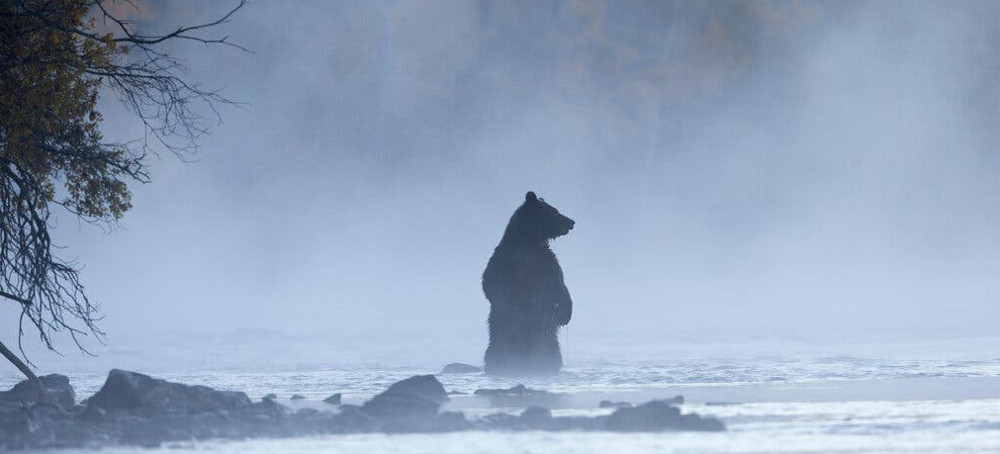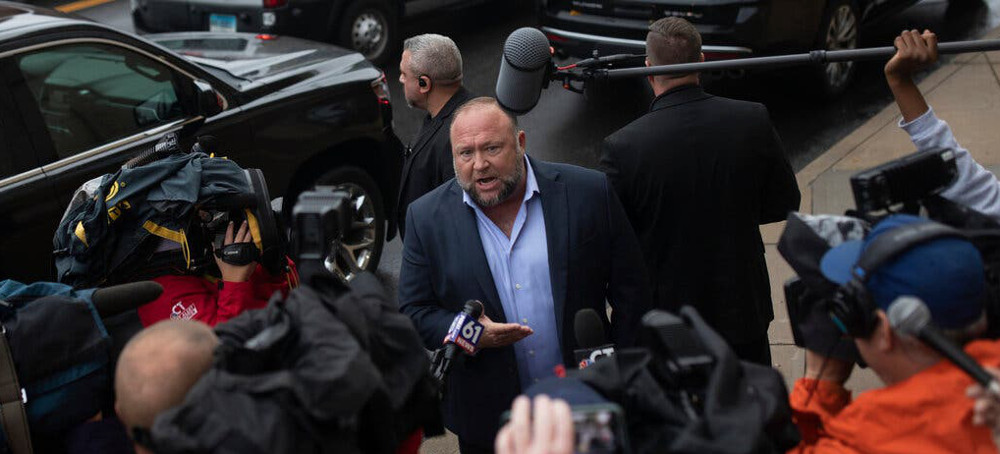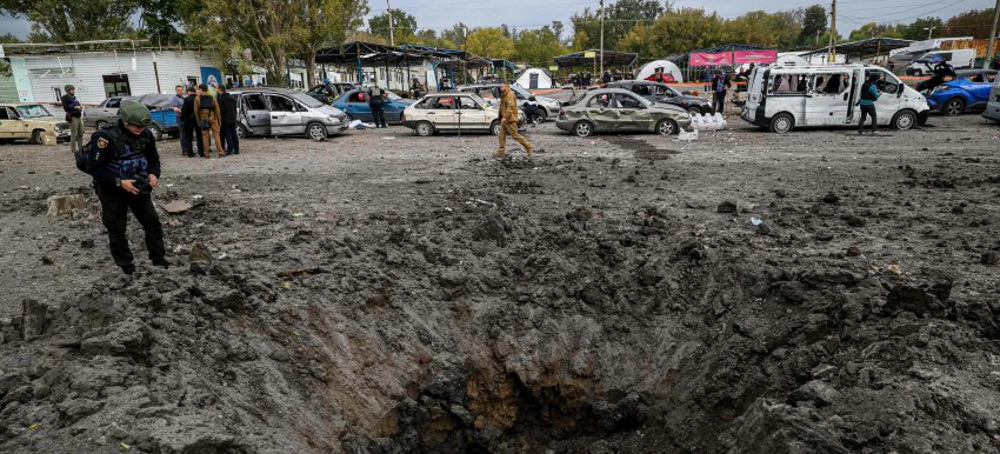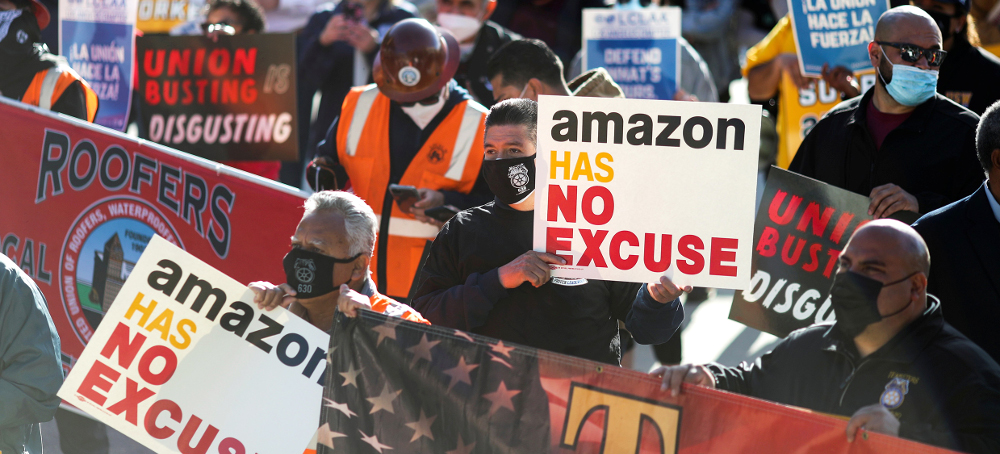Live on the homepage now!
Reader Supported News
“The Saudis are working to get Trump re-elected and for the MAGA Republicans to win the midterms.”
Congressional Democrats facing reelection amid soaring gas prices were similarly incensed. Usually, Capitol Hill will trot out bloodless language of “deep concern” in response to the kingdom’s myriad human rights abuses, but this time congressional Democrats struck back, vowing to block weapons sales and even taking the unprecedented step of introducing legislation to withdraw U.S. troops from Saudi Arabia and the United Arab Emirates. The bill’s sponsors linked their efforts to the war in Ukraine, pointing out how keeping oil prices high results in a windfall of profit to bankroll Russian President Vladimir Putin’s bloody invasion.
Yet experts pointed to the price hikes as more than a geopolitical move. They said it was also a foray by Saudi’s de facto ruler, Crown Prince Mohammed bin Salman, or MBS, into U.S. electoral politics: a move by the Saudi-dominated oil cartel OPEC against President Joe Biden and in favor of Donald Trump.
“The Saudis are working to get Trump re-elected and for the MAGA Republicans to win the midterms,” Bruce Riedel, a senior fellow of the Brookings Institution, told The Intercept. “Higher oil prices will undermine the Democrats.”
Oil prices affect not just the price at the pump but also the cost of virtually everything in our fossil fuel-dependent economy — and are a major driver of inflation. “There’s no doubt that the Saudi-led OPEC oil production cuts are a strategic effort to hurt Americans at the pump and undermine our work to tackle rising costs,” said Rep. Ro Khanna, D-Calif., in an email.
MBS’s affinity for Trump is hardly a secret. Trump broke with presidential tradition by paying his first foreign visit to Saudi Arabia’s capital, where he inked a record $350 billion weapons sale to the autocracy. He also repeatedly defended MBS amid reporting, including by his own CIA, that the crown prince had ordered the murder of Washington Post journalist Jamal Khashoggi. “I saved his ass,” Trump reportedly said. “I was able to get Congress to leave him alone” — referring to three times he vetoed congressional resolutions blocking billions in weapons sales to the Saudis.
The cozy relationship between Trump’s circles and the Saudis persisted after the president left office. Just six months after leaving the White House, Jared Kushner, Trump’s son-in-law and former top White House adviser, won a $2 billion investment from the Saudi sovereign wealth fund at the request of MBS, who overrode the objections of Saudi officials. Kushner would later flaunt his influence with the Saudis in a pitch to investors for his investment firm Affinity Partners, according to a pitch deck obtained by The Intercept in April. And Trump’s Treasury Secretary Steven Mnuchin’s firm, Liberty Strategic Capital, raised $1 billion from the Saudi sovereign wealth fund.
Experts suggest that MBS’s oil production cut is a targeted attempt to hurt the Democrats’ electoral prospects. “This is MBS’s October surprise,” said Trita Parsi, executive vice president of the Quincy Institute for Responsible Statecraft. “This is his election interference. It forces Biden to make a choice: Will he protect America’s democracy and Democratic lawmakers in Congress, or will he triple down on a flawed gamble that says that the U.S. has no choice but to acquiesce to Saudi Arabia to prevent Riyadh from aligning with Russia?”
Khalid Aljabri — son of Saudi Arabia’s former intelligence chief, Saad Aljabri, and a frequent commentator on Saudi affairs — also made the comparison to the October Surprise: a term for a late-in-the-game, election-swinging event coined during Ronald Reagan’s successful bid to unseat Jimmy Carter. Aljabri said, “Emboldened by Biden’s no-consequence policy and empty campaign rhetoric, MBS wants to make a Carter out of Biden with OPEC’s October surprise, knowing that high gas prices and inflation influence domestic U.S. politics.”
In many ways, MBS’s decision to tamp down oil production is a rebuke to Biden’s controversial meeting with the crown prince in Jeddah this summer in which the two shared a fist bump. The meeting — following secret backchanneling with Riyadh by CIA Director William Burns, in which oil was discussed — flew in the face of Biden’s campaign promise to make Saudi Arabia a “pariah.”
There were several early signs that the meeting wouldn’t lead to the diplomatic thaw that the administration had hoped for. When Biden touched down in Jeddah, he was greeted not by a top official but by a provincial governor — a major diplomatic snub. And within minutes of the meeting between Biden and MBS, Saudi officials were leaking to the media, disputing Biden’s claim to have brought up Khashoggi.
The failure of the meeting to repair relations created tension between the White House and congressional Democrats, who feel as though the oil production cuts leave them vulnerable in the upcoming election and that the administration isn’t doing enough to compel Saudi Arabia to restore production.
Sources close to the administration, who asked for anonymity because they were not authorized to speak publicly, blame Biden’s Saudi visit on his Middle East coordinator on the National Security Council, Brett McGurk. The personification of Washington’s foreign policy consensus, impervious to change, McGurk has served in every administration since President George W. Bush as an unwavering advocate of cozier relations with Riyadh.
“President Biden has been getting bad advice on Middle East policy for a long time, and this OPEC decision is really a predictable failure of his trip to the region this summer,” a Democratic House Foreign Affairs Committee staffer told The Intercept. “The president is getting bad advice from McGurk and others, and this should be a wakeup call. It would be negligent not to make any changes at the NSC.”
Rights advocates working on the Middle East echoed the calls for a shakeup at NSC. “It’s no secret that Biden’s Middle East advisor Brett McGurk was the principal champion for pushing Biden to capitulate to Saudi and UAE — on arms sales, on U.S. forces and weapons in their countries, and of course meeting with MBS directly, on the fiction that they would serve US interests,” said Sarah Leah Whitson, the executive director of DAWN, the pro-democracy group founded by Jamal Khashoggi. “It’s clearer now more than ever that this was just really bad advice because all this capitulation has secured nothing other than Biden’s global humiliation.”
Democrats have several policy tools they can use to compel Saudi Arabia to back off the production cuts. On Monday, Sen. Bob Menendez, D-N.J., chair of the powerful Senate Foreign Relations Committee, said that he would use his power to block all weapons sales to Saudi Arabia going forward.
While Menendez has called on the Biden administration to suspend all U.S. cooperation with the Saudis, the administration has only said vaguely that it would reevaluate the relationship. Responding to congressional Democrats’ calls to block military support to Saudi Arabia, the State Department made clear that it would not do so. Instead, the Biden administration is reportedly discussing canceling an upcoming meeting in Riyadh concerning air and missile defense cooperation.
“I think that’s barely a slap on the wrist,” a source close to the administration said, pointing out that MBS and even many high-level officials weren’t going to be attending the meeting. “Them skipping out on this meeting is not going to cause MBS to lose sleep.”
READ MORE A grizzly bear in British Columbia. One controversy surrounding the index has been whether a small number of populations in drastic decline call into question the overall results. (photo: Roberta Olenick/Alamy)
A grizzly bear in British Columbia. One controversy surrounding the index has been whether a small number of populations in drastic decline call into question the overall results. (photo: Roberta Olenick/Alamy)
The latest update to an important assessment found that populations had declined by an average of 69 percent since 1970. But that might not mean what you think.
One of the most ambitious efforts to fill this void is published every two years. Known as the Living Planet Index, it’s a collaboration between two major conservation organizations, the World Wide Fund for Nature and the Zoological Society of London. But the report has repeatedly resulted in inaccurate headlines when journalists misinterpreted or overstated its results.
The assessment’s latest number, issued Wednesday by 89 authors from around the world, is its most alarming yet: From 1970 to 2018, monitored populations of vertebrates declined an average of 69 percent. That’s more than two-thirds in only 48 years. It’s a staggering figure with serious implications, especially as nations prepare to meet in Montreal this December in an effort to agree on a new global plan to protect biodiversity. But does it mean what you think?
What the data does, and doesn’t, mean
Remember that this number is only about vertebrates: mammals, birds, reptiles, amphibians and fish. Absent are creatures without spines, even though they make up the vast majority of animal species (scientists have even less data on them).
So, have wild vertebrates plummeted by 69 percent since 1970?
No.
The study tracks selected populations of 5,320 species, vacuuming up all the relevant published research that exists, adding more each year as new data permits. It includes, for example, a population of whale sharks in the Gulf of Mexico counted from small planes flying low over the water, and birds tallied by the number of nests on cliffs. Depending on the species, tools like camera traps and evidence like trail droppings help scientists estimate the population in a certain place.
This year’s update includes almost 32,000 such populations.
There’s a temptation to think that an average 69 percent decline in these populations means that’s the share of monitored wildlife that was wiped out. But that’s not true. An addendum to the report provides an example of why.
Imagine, the authors wrote, we start with three populations: birds, bears and sharks. The birds decline to 5 from 25, a drop of 80 percent. The bears fall to 45 animals from 50, or 10 percent. And the sharks decrease to 8 from 20, or 60 percent.
That gives us an average decline of 50 percent. But the total number of animals fell to 92 from 150, a drop of about 39 percent.
The index is designed that way because it seeks to understand how populations are changing over time. It doesn’t measure how many individuals are present.
“The Living Planet Index is really a contemporary view on the health of the populations that underpin the functioning of nature across the planet,” said Rebecca Shaw, chief scientist at WWF and an author of the report.
Another important factor is the way monitored populations end up in the index. They don’t represent a broad, randomized sampling. Rather, they reflect the data that’s available. So there is quite likely bias in which species are tracked.
One controversy has been whether a small number of populations in drastic decline call into question the overall results. Two years ago, a study in Nature found that just 3 percent of populations were driving a drastic decline. When those were removed, the global trend switched to an increase.
The paper sparked a flurry of responses in Nature as well as additional explanation and stress testing for this year’s update. On the bright side, the authors note that about half of the populations in the Living Planet Index are stable or increasing. However, when they tried excluding populations with the most drastic changes in both directions, down and up, the average descent remained steep.
“Even after we removed 10 percent of the complete data set, we still see declines of about 65 percent,” said Robin Freeman, head of the indicators and assessments unit at the Zoological Society of London and an author of the report.
So, is it still bad?
Yes. Some scientists think the report actually underestimates the global biodiversity crisis, in part because devastating declines in amphibians may be underrepresented in the data.
And, over time, the trend is not turning around.
“Year after year we are not able to start improving the situation, despite major policies,” said Henrique M. Pereira, a professor of conservation biology at the German Center for Integrative Biodiversity Research who was not involved in this year’s report. “At most we have been able to kind of slow down the declines.”
Latin America and the Caribbean saw the worst regional drop, down 94 percent from 1970. The pattern was most pronounced in freshwater fish, reptiles and amphibians. Africa was next at 66 percent; Asia and the Pacific saw 55 percent. The region defined as Europe-Central Asia saw a smaller decline, at 18 percent, as did North America, at 20 percent. Scientists emphasized that far steeper biodiversity losses in those two areas likely occurred long before 1970 and aren’t reflected in this data.
Scientists know what’s causing biodiversity loss. On land, the top driver is agriculture, as people turn forests and other ecosystems into farmland for cattle or palm oil. At sea, it’s fishing. There are ways to do both more sustainably.
If climate change is not limited to 2 degrees Celsius, and preferably 1.5 degrees, its consequences are expected to become the leading cause of biodiversity loss in coming decades, the report said.
In December, the nations of the world will gather to try to reach a new agreement to safeguard the planet’s biodiversity. The last one mostly failed to meet its targets. The Living Planet report offers evidence for how to succeed this time, Dr. Shaw said. A critical lesson is that conservation doesn’t work without the support of local communities.
“When we get really focused conservation efforts that incorporate the community, that have the communities stewarding the outcomes because they benefit from it, we see that it is possible to have increases in populations,” she said. “Which is really the bright spot.”
READ MORE Alex Jones faces financial ruin after a jury awarded the families who had sued him almost $1 billion, though it is unclear how much money the families will ultimately collect. (photo: Kirsten Luce/The New York Times)
Alex Jones faces financial ruin after a jury awarded the families who had sued him almost $1 billion, though it is unclear how much money the families will ultimately collect. (photo: Kirsten Luce/The New York Times)
ALSO SEE: Alex Jones Has Limited Options to Get Out of Paying $1B Settlement
A former U.S. attorney said the Infowars host is financially doomed even if he tries to wiggle his way out of paying nearly $1 billion in damages.
“It’s an old sorry tale that it’s one thing to get a verdict and another thing to chase it,” Harry Litman, a former deputy assistant attorney general, said Wednesday on MSNBC. “You can attach his assets. I’m sure there will be subsequent litigation where he’ll say ‘bankruptcy’ and they’ll try to get forensic investigators and say he doesn’t have it.
“But we’re talking about such outsized numbers that even if he’s able to bob and weave some, I just don’t see how he winds up anything but basically broke now for the rest of his life.”
On his Infowars show Wednesday, Jones mocked the jury’s verdict as it was being read. “Ain’t gonna be happening, ain’t no money,” he said, as the live news feed showed a plaintiff crying in the courtroom.
Jones then encouraged viewers to donate to him and assured them the money would not go to the victims’ families but to pay to appeal the decision and save his company.
Multiple family members of Sandy Hook victims, as well as an FBI agent who responded to the 2012 shooting, sued Jones for his repeated lies that the massacre was a hoax. A Connecticut jury ruled on Wednesday that Jones must pay them a combined total of nearly $1 billion in damages, 10 years after a gunman killed 20 children and six adults at the school in Newtown, Connecticut.
Jones plans to appeal the verdict. His company, Free Speech Systems, filed for bankruptcy protection in July during the early stages of another trial in Texas that ultimately determined he must pay $45 million to the parents of a child killed in the Sandy Hook shooting.
In April, Jones filed to put three small business entities linked to his Infowars empire into bankruptcy protection. A Justice Department monitor flagged the move as a potential abuse of the federal bankruptcy system and an apparent effort to delay damages trials.
READ MORE A large crater left by the missile strike near vehicles belonging to civilians killed in the attack. (photo: Kateryna Klocko/AFP)
A large crater left by the missile strike near vehicles belonging to civilians killed in the attack. (photo: Kateryna Klocko/AFP)
"This is cruelty that has no justification," Syniehubov said.
As Ukraine recaptured settlements in Kharkiv Oblast on Sept. 10, law enforcement started uncovering potential crimes the Russian forces committed during the occupation.
According to Ukraine's Security Service, in then-occupied Kupiansk, Russian troops had tortured locals, threatening to send them to a minefield and kill their families.
On Sept. 30, a Russian missile struck a civilian convoy near Zaporizhzhia, killing 30 and wounding 88 people.
READ MORE Court filings by the Justice Department, including a photo that shows documents seized during the FBI search Aug. 8 of former president Donald Trump's Mar-a-Lago estate. (photo: Justice Department/AP)
Court filings by the Justice Department, including a photo that shows documents seized during the FBI search Aug. 8 of former president Donald Trump's Mar-a-Lago estate. (photo: Justice Department/AP)
Key witness and security-camera footage offer evidence of Trump’s actions after government subpoena, people familiar say
The witness description and footage described to The Washington Post offer the most direct account to date of Trump’s actions and instructions leading up to the FBI’s Aug. 8 search of the Florida residence and private club, in which agents were looking for evidence of potential crimes including obstruction, destruction of government records or mishandling classified information.
The people familiar with the investigation said agents have gathered witness accounts indicating that, after Trump advisers received a subpoena in May for any classified documents that remained at Mar-a-Lago, Trump told people to move boxes to his residence at the property. That description of events was corroborated by the security-camera footage, which showed people moving the boxes, said the people, who spoke on the condition of anonymity to discuss an ongoing investigation.
Spokespeople for the Justice Department and FBI declined to comment.
Trump spokesman Taylor Budowich declined to answer detailed questions for this article. “The Biden administration has weaponized law enforcement and fabricated a Document Hoax in a desperate attempt to retain political power,” Budowich said in a statement. “Every other President has been given time and deference regarding the administration of documents, as the President has the ultimate authority to categorize records, and what materials should be classified.”
Budowich accused the Justice Department of a “continued effort to leak misleading and false information to partisan allies in the Fake News,” and said that to do so “is nothing more than dangerous political interference and unequal justice. Simply put, it’s un-American.”
The employee who was working at Mar-a-Lago is cooperating with the Justice Department and has been interviewed multiple times by federal agents, according to the people familiar with the situation, who declined to identify the worker.
In the first interview, these people said, the witness denied handling sensitive documents or the boxes that might contain such documents. As they gathered evidence, agents decided to re-interview the witness, and the witness’s story changed dramatically, these people said. In the second interview, the witness described moving boxes at Trump’s request.
The witness is now considered a key part of the Mar-a-Lago investigation, these people said, offering details about the former president’s alleged actions and instructions to subordinates that could have been an attempt to thwart federal officials’ demands for the return of classified and government documents.
Multiple witnesses have told the FBI they tried to talk Trump into cooperating with the National Archives and Records Administration and the Justice Department as those agencies for months sought the return of sensitive or historical government records, people familiar with the situation said.
But entreaties from advisers and lawyers who pushed for Trump to hand the documents back fell on deaf ears with Trump, these people said, speaking on the condition of anonymity to discuss private conversations. Trump grew angry this spring after a House Oversight Committee investigation was launched, telling aides they’d “screwed up” the situation, according to people who heard his comments. “They’re my documents,” Trump said, according to an aide who spoke to him.
The details shared with The Post reveal two key parts of the criminal probe that until now had been shrouded in secrecy: an account from a witness who worked for and took directions from Trump, and the way that security footage from Mar-a-Lago has played an important role in buttressing witness accounts.
Together, those pieces of evidence helped convince the FBI and Justice Department to seek the court-authorized search of Trump’s residence, office and a storage room at Mar-a-Lago, which resulted in the seizure of 103 documents that were marked classified and had not been turned over to the government in response to the May subpoena. Some of the documents detail top-secret U.S. operations so closely guarded that many senior national security officials are kept in the dark about them. The Aug. 8 search also yielded about 11,000 documents not marked classified.
The failure or possible refusal to return the classified documents in response to the subpoena is at the heart of the Justice Department’s Mar-a-Lago investigation, which is one of several high-profile, ongoing probes involving Trump. The former president remains the most influential figure in the Republican Party and talks openly about running for the White House again in 2024.
Within Trump’s orbit, there have been months of dueling accusations and theories about who may be cooperating with the federal government. Some of the former president’s closest aides have continued to work with Trump even as they have seen FBI agents show up at their houses to question them and serve subpoenas.
Within the Justice Department and FBI, the witness’s account has been a closely held secret as agents continue to gather evidence in the high-stakes investigation. In addition to wanting to keep the information they have gathered so far under wraps, people familiar with the situation said, authorities are also concerned that if or when the witness’s identity eventually becomes public, that person could face harassment or threats from Trump supporters.
In a filing to the Supreme Court on Tuesday, Justice Department lawyers appeared to allude to witness accounts and the video footage when they wrote: “The FBI uncovered evidence that the response to the grand jury subpoena was incomplete, that additional classified documents likely remained at Mar-a-Lago, and that efforts had likely been taken to obstruct the investigation.”
Since the Aug. 8 search, Trump has offered a number of public defenses of why documents with classified markings remained at Mar-a-Lago — saying he declassified the secret documents, suggesting that the FBI planted evidence during the search, and suggesting that as a former president he may have had a right to keep classified documents. National security law experts have overwhelmingly dismissed such claims, saying they range from far-fetched to nonsensical.
Officials at the National Archives began seeking the return of documents last year, after they came to believe that some presidential records from the Trump administration — such as letters from North Korean leader Kim Jong Un — were unaccounted for, and perhaps in Trump’s possession.
After months of back-and-forth, Trump agreed in January to turn over 15 boxes of material. When archivists examined the material, they found 184 documents marked classified, including 25 marked top secret, which were scattered throughout the boxes in no particular order, according to court filings.
That discovery suggested to authorities that Trump had not turned over all the classified documents in his possession. In May, a grand jury subpoena demanded the return of classified documents with a wide variety of markings, including a category used for secrets about nuclear weapons.
In response to that subpoena, Trump’s advisers met with government agents and prosecutors at Mar-a-Lago in early June, handing over a sealed envelope containing another 38 classified documents, including 17 marked top secret, according to court papers. According to government filings, Trump’s representatives claimed at the meeting that a diligent search had been conducted for all classified documents at the club.
That meeting, which included a visit to the storage room where Trump’s advisers said the relevant boxes of documents were kept, did not satisfy investigators, who were not allowed to inspect the boxes they saw in the storage room, according to government court filings.
Five days later, senior Justice Department official Jay Bratt wrote to Trump’s lawyers to remind them that Mar-a-Lago “does not include a secure location authorized for the storage of classified information.” Bratt wrote that it appears classified documents “have not been handled in an appropriate manner or stored in an appropriate location.”
“Accordingly, we ask that the room at Mar-a-Lago where the documents had been stored be secured and that all of the boxes that were moved from the White House to Mar-a-Lago (along with any other items in that room) be preserved in that room in their current condition until further notice.”
Agents continued to gather evidence that Trump was apparently not complying with either government requests or subpoena demands. After significant deliberation, aware that it would be highly unusual for federal agents to search a former president’s home, they decided to seek a judge’s approval to do so.
That Aug. 8 search turned up, in a matter of hours, 103 documents marked classified, including 18 marked top secret, according to court papers. The stash included at least one document that described a foreign country’s military defenses, including its nuclear capabilities.
READ MORE People protest in Los Angeles in support of unionizing efforts by Alabama Amazon workers on March 22. (photo: Lucy Nicholson/Reuters)
People protest in Los Angeles in support of unionizing efforts by Alabama Amazon workers on March 22. (photo: Lucy Nicholson/Reuters)
Workers are demanding better treatment, pay, and an end to retaliatory behavior. Will Amazon be able to say no?
On Wednesday, workers at Amazon’s ALB1 facility in Albany, New York, started voting on whether to organize with the Amazon Labor Union, the group that unionized Amazon’s JFK8 facility and which is currently negotiating with Amazon for a contract. Another fulfillment center in Moreno Valley, California, has also filed to hold a vote on whether to join with the ALU, though the National Labor Relations Board still has to confirm whether 30 percent of the unit’s 800 workers signed cards saying they’re interested in the election.
There’s also a real threat of a work stoppage just as Prime Day packages are being fulfilled. Workers at Amazon’s Inland Empire air cargo facility in San Bernardino, California, have vowed to go on strike starting on Friday. The company is also facing a strike in Buford, Georgia, according to More Perfect Union, and there have been walkouts at facilities in Joliet, Illinois, and Stone Mountain, Georgia.
The reasons for the employee actions are varied; in Illinois, workers are demanding protections against violence, injury, and sexual harassment. In California, workers have been demanding “basic safety measures” after Amazon failed to respond to a walkout this summer, where workers accused the company of not giving them breaks or aid during excessive heat. High temperatures have actually been a concern in many areas — earlier this year, lawmakers cited how Amazon handled 2017 and 2018 heatwaves in their demand for information on its severe weather policies, and the company has reportedly installed new air conditioning equipment at a facility where a worker died during the last Prime Day event (the company blamed “a personal medical condition” for the incident).
According to Jane Chung from The Worker Agency, Amazon “failed to meet workers’ demands and has responded to workers who are organizing to improve their jobs by bringing in high-paid outside consultants who harass and follow workers around in an attempt to dissuade them from organizing for better conditions.” She also mentioned that its Prime Day events exacerbate its “invasive surveillance, dangerous pace of work, and deadly conditions” because it means employees have to “sprint to fulfill the massive growth in packages ordered, transported, and delivered.”
Universally, the new groups of employees are asking for better pay. Amazon set a $15-per-hour minimum wage in 2018 and has promised to raise the hourly wages for its warehouse and transportation workers more recently, saying that customer fulfillment and transportation employees would start at $16 an hour. But Inland Empire Amazon Workers United says that isn’t enough to keep up with rising costs of living. And with e-commerce heading into its busiest season, critical fulfillment workers have a unique chance to pressure the company for better pay.
Even as Amazon worries about running through the entire labor pool in some areas, it continues to upset some of the workers it relies on to keep its operations afloat. In Illinois, the company allegedly fired a worker who tried to get it to act after racist death threats were scrawled on the bathroom walls at one of its facilities. At JFK8, the ALU says Amazon suspended dozens of workers after they refused to go back to work in a warehouse filled with smoke after a fire. And workers at the Inland Empire air facility say the company retaliated against those who spoke out or organized (something that the NLRB has formally accused the company of doing in at least one instance).
It’s unclear how much impact walkouts and strikes have on Amazon’s operations and its bottom line. Amazon didn’t immediately respond to The Verge’s questions asking about the effects workers were having, although it doesn’t seem like Amazon customers are noticing mass shipping delays so far. Worker actions are also heavily regulated in the US; there can be different rules about how you can strike if you’re not part of a union that’s voted to do so.
Regardless, it doesn’t seem as if workers are going to stop trying to get better treatment from Amazon, and it feels like we may be reaching a breaking point. Prime Day may be ending soon, but the work will continue for Amazon’s warehouse and transportation workers. And while organizers at the company have used the event to stress how important they are to the Amazon experience, it seems unlikely that they’ll stop their demonstrations anytime soon.
READ MORE The bobolink lives in grasslands across much of the U.S. and its populations have declined significantly due to habitat loss and pesticide use. (photo: Brad Imhoff/Cornell University)
The bobolink lives in grasslands across much of the U.S. and its populations have declined significantly due to habitat loss and pesticide use. (photo: Brad Imhoff/Cornell University)
The U.S. State of the Birds 2022 report introduces a “tipping point list,” identifying 70 species at risk of becoming endangered. These species have already declined by at least 50% and could lose another half of their population in the next 50 years, according to researchers.
“What we mean by tipping point is they're on that slide toward becoming endangered,” said Ken Rosenberg, one of the study's authors and a retired scientist from Cornell University.
“We've maybe been too complacent and just sort of take for granted that there's always going to be these beautiful birds singing out in the yard or in the park," he said. "And it's getting to the point where that might not be true.”
One of the birds reaching a tipping point is the bobolink — a small black and white bird with yellow feathers on the back of its head found in pastures in Massachusetts. Bobolinks have lost about 60% of their population since 1970 when the survey began. In the last decade alone, researchers estimate the bobolink population declined by 25%.
Bobolink and other grassland birds are suffering largely due to habitat loss from housing development and use of pesticides.
“[The bobolink has] just been declining so steeply that we're worried it could disappear from the northeastern states completely,” Rosenberg said.
Grassland birds and shorebirds have suffered the most losses, the researchers found. Some of the affected shorebirds migrate through Massachusetts, including the Hudsonian Godwit, Ruddy Turnstone and Semipalmated sandpiper.
Birds depending on forests and arid lands are also decreasing in numbers. Waterfowl, such as ducks and geese, saw an increase in population thanks to wetland conservation efforts.
Individuals can help
Rosenberg said people can help protect birds by supporting conservation policies and organizations. Two big causes of bird deaths in the U.S. are glass windows and cats allowed outdoors, so a few simple changes at home could make a big difference, he added.
“It's not just the big glass, high-rise buildings in the cities that are killing birds," he said. "The largest number of birds are actually killed by residential windows."
Here is a list of how you can help the birds, created by the scientists at Cornell University. The university also offers a free app to help identify birds by appearance and bird call all over the world, called Merlin Bird ID.
Follow us on facebook and twitter!
PO Box 2043 / Citrus Heights, CA 95611



No comments:
Post a Comment
Note: Only a member of this blog may post a comment.